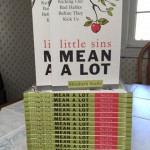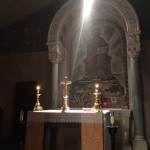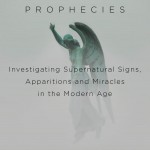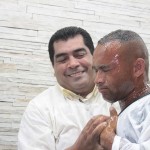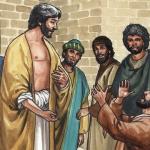It’s that time of the year again. As Ash Wednesday approaches (it’s later than usual this year, and am I the only one who feels likes she’s missing it and needs it to begin?) I’ll be suggesting books that may enhance the Lenten journey.
Foremost in my recommendations will be this book, Jesus and the Jewish Roots of the Eucharist. It is foremost because the Holy Eucharist is the source and summit of our faith, and it is so poorly understood by so many — even among Catholics — that I can think of no more important read, this year than Dr. Brant Pitre’s exposition of 1st Century Judaism and how it provides much-needed (and enlightening and darned exciting) context to the core belief of our faith, which is that Jesus Christ is truly Present in the Bread – Flesh, Blood, Soul and Divinity.
I had an opportunity to interview Pitre in anticipation of the book’s release. I asked him five questions, and in retrospect, I wish I had asked him a sixth, about the all-important fourth cup of the Passover, and Christ’s last words on the cross, but I think you’ll find the interview interesting, even so.
. . .my personal favorite is the chapter on the Bread of the Presence. This mysterious bread, which was kept in the Tabernacle of Moses and later in the Jerusalem Temple, is consistently overlooked by Christians, because it’s tucked away in the dreaded book of Leviticus! Yet it is easily one of the most transparent foreshadowings of the Eucharist in the Bible. I will never forget the day when I was reading the Jewish Talmud and discovered that the priests in the Temple used to take out the Bread of the Presence at the festivals, elevate it in the sight of the pilgrims, and proclaim: “Behold, God’s love for you”! Could you ask for a clearer parallel with the elevation of the Eucharist in the Mass, what Pope Benedict has called the “Sacrament of Charity”?
Yeah, that gave me a thrill of recognition, too! In fact it reminds me both of the elevation of the Blessed Sacrament at mass, and of this picture of John Paul II, holding aloft the monstrance for adoration and for the blessing of the people, during Benediction:
Longtime readers may recall that back in 2009 Rick at Brutally Honest and I got into a minor tussle about recieving Communion while one is not a Catholic. Since then, Rick has written now and then on his blog about the slow, sometimes painful journey he and his wife are making to become fully received into the church and he has been, yes, brutally honest about it. He has written a review of Jesus and the Jewish Roots of the Eucharist that is very affecting:
I’ve been away from the Catholic faith for 40 years, in essence wandering in the wilderness as the Jews who were led out of Egypt. My trek toward belief in the Real Presence has been slow and methodical, perhaps even too cerebral; my struggles have been, well . . . real and present. Pitre’s book has helped fill the intellectual gaps and in that sense is an enormous assist. [. . .] I have longed and do long for the presence of God. I am comforted, consoled, strengthened, encouraged, chastened, made aware of my sinfulness, healed and forgiven by His nearness. I have lately been able to experience these things and more during Holy Communion, during Adoration and recently, during a moving and most holy Eucharistic Healing service offered by The Franciscan Friars of the Renewal.
I’ve entered into these things with imperfect faith, with flawed belief, with too many doubts and yet each time, I’ve been granted release. Each time I have left a Eucharistic encounter believing more strongly than before that something mystical and something holy and something real had been before me and experienced by me. My faith has been strengthened.
In Jesus and the Jewish Roots of the Eucharist, Brant Pitre has provided a firm foundation on which I can literally build my faith, and wrap my brain around the Scriptural basis for Christ’s Presence in the breaking of the bread. This is, frankly, an answer to my prayer and my desiring.
As I said, it’s affecting.
Julie Davis at Happy Catholic, meanwhile, is even “happier” since reading Pitre’s book, and her review is very smart:
There is a thrill of discovery at seeing the pieces fall into place, and that makes the book a surprising page-turner; the reader eagerly wonders where the next revelation will take them. Jesus and the Jewish Roots of the Eucharist makes it crystal clear why ancient Jews and early Christians alike understood Jesus’ outrageous claims about the Eucharist, that he is truly present in it now and forever.
This book made me look at the Eucharist and Jesus’ promises with new eyes and new appreciation for the truth hidden in plain sight in the Catholic Church. It answers the question that Brant Pitre encountered so long ago as a college student, “How can you Catholics teach that bread and wine actually become Jesus’ body and blood? Do you really believe that?”
It occurs to me that the word “thrill” keeps popping up. Yes, it is an absolute thrill to watch Pitre connect all the dots. And a little humbling when he reveals that, in much more casual ways, this is almost all in the brilliant Catechism that nobody reads enough (myself included).
Finally, if you are interested, here is a little gift, a dono; do yourself a favor and read chapter one of the book; you’ll want to read more.
Related:
Monstrance with Blessed Sacrament Stolen from Parish in Spain








